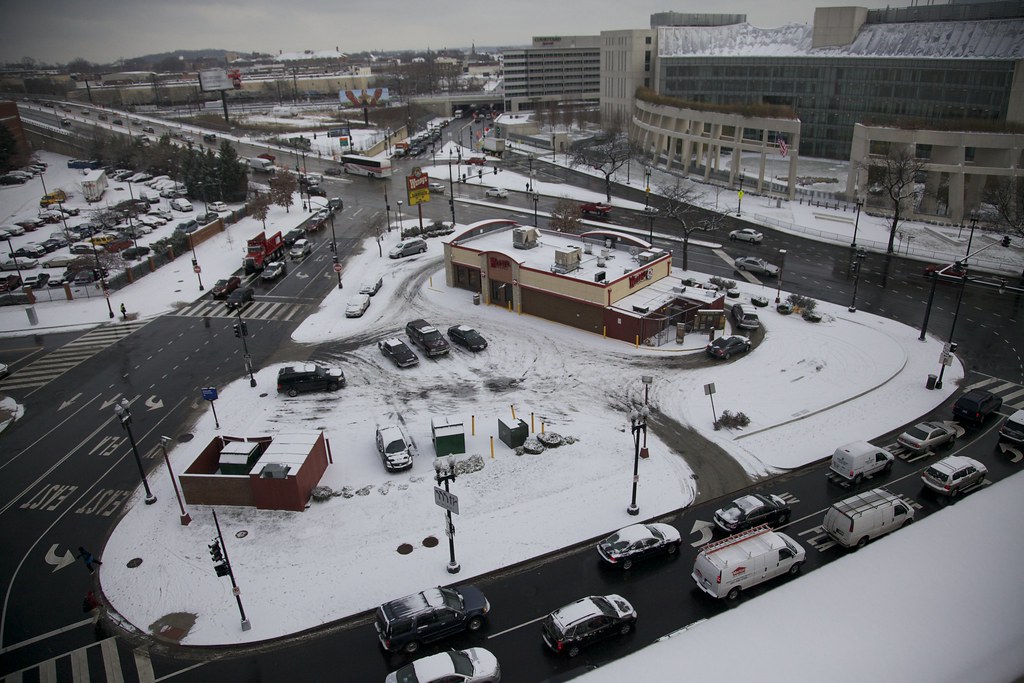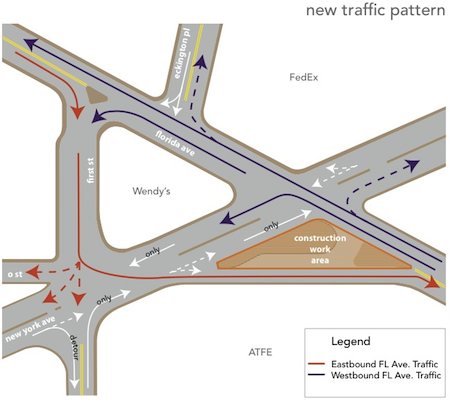Traffic circles or roundabouts are a common design that circulates traffic safely and efficiently through intersections. They are a primary choice in many parts of the world. Nonetheless, they are much less common in the United States. Many American drivers tremble in fear when encountering one. That is the exact situation experienced this week by commuters and tourists in Washington, DC.
Well, at least according to a June 16, 2010 article in the Washington Post.
An Awful Intersection

Legendary traffic bottlenecks form at the intersection of New York and Florida Avenues in the northeast part of the city (map). This is a product of the original city design, where diagonal avenues overlay a traditional grid. It may have been an innovative concept back in the early Nineteenth Century when people got around on horseback, and I suppose even today for the fans of the numerous pocket-parks formed by all those crazy intersections. Unfortunately, it’s not so wonderful for modern automobile traffic.
A New Solution
Traffic engineers responded by creating a virtual triangular-ish traffic “circle”. Thus they incorporated First Street and D Street into a rotary design. Traffic on New York Avenue still goes in both directions so it’s Florida Avenue that experiences the greatest impact as it spirals into the vortex. It’s hard to tell exactly. It all looks rather confusing, and maybe that’s the problem.

Commuters will figure out the new pattern rather quickly through daily use. Meanwhile, tourists will continue to suffer for awhile. New York Ave. carries the U.S. Route 50 designation and it’s a major approach into the city for drivers coming from the east.
This will create a particularly onerous situation for people who rely too heavily on Global Positioning System (GPS) technology. It will take several months for the new pattern to filter into electronic maps. It’s going to cause problems until that happens.
Are there similar virtual roundabouts elsewhere?

Leave a Reply